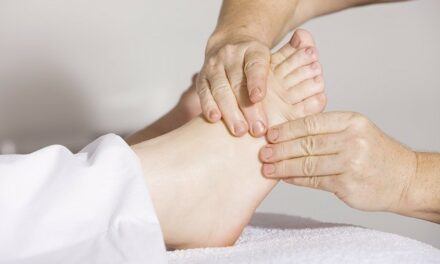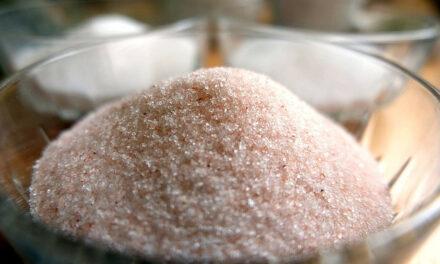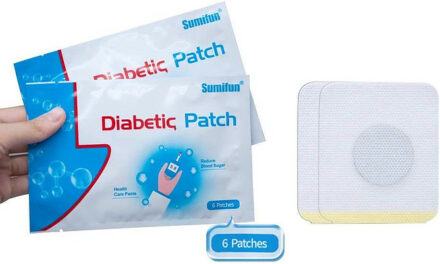Often diabetes, both diabetes mellitus type 1 and type 2, and high blood pressure occurs along, but is there really a link in between the two?
In this article, I am going to talk about the link and will be addressing the answer to ‘Can High Blood Pressure Cause Diabetes?’.
Yes, there is a ‘mateship’ and a close relationship between hypertension and diabetes mellitus. Approximately 75% of diabetic patients will develop hypertension during their life.
Mechanisms that interferes the development of diabetes and hypertension are believed to be below.
- Tissue-based renin-angiotensin-aldosterone axis activation;
- Volume expansion secondary to hyperglycemia;
- Reduced baroreceptor response;
- Vascular oxidative stress, and
- Endothelial dysfunction.
But, what that really means?
Also, it has to be mentioned in science that control of hypertension in diabetic patients is much more complicated than in nondiabetic patients.
Studies showed that multiple antihypertensive agents are needed to achieve regular blood pressure in this population.
As well, if systolic blood pressure is increased, chances of dying are even greater in diabetic patients than in patients without diabetes, and also, with normal blood pressure risk for cardiovascular death (e.g. heart attack) is 25-fold higher.
A research study that was conducted in the UK, the UK prospective diabetes study, showed a parallel increase in microvascular (small blood vessels) occurrence, like gastroparesis, blindness, and end-stage of kidney disease, against macro-vascular (large blood vessels) events, and the occurrence of myocardial infarction (i.e. heart attack).
With every increment of systolic blood pressure, incidence of both, macrovascular and microvascular events increase. To prevent these conditions, both of them, blood pressure need to be controlled and aggressively managed.
Microvascular changes actually occur 8-10 years before diagnosis. Measurement of insulin resistance or prediabetes is easily administrated, but this method is not used in everyday practice, only in research studies.
Albumin excretion, over 4.8 micrograms per minute reflects endothelial damage, and it occurs before diagnosis, while the progression of microalbuminuria predicts high blood pressure, aka hypertension, as well as other complication of diabetes and kidney disease.
An Independent and robust determinant of coronary disease and heart disease is definitely microalbuminuria.
How to identify Diabetes or High Blood Pressure?
Each of these two diseases is easy to identify using simple tests.
Diabetes
To identify diabetes, people use blood glucose tests and a1c testing.
High blood pressure
For high blood pressure, most of the times people are not aware that they have it, and they usually find out that they have high blood pressure after a random blood pressure reading provided by the doctor.
If you experience high blood pressure, it means that your heart pumping blood in higher pressure, so blood vessels are in too much force which over time tires heart muscle.
Very often, people with high blood pressure will not have any signs or symptoms.
Tip: Here are the symptoms of prediabetes and diabetes in women, men and children.
A device known as sphygmomanometer is used to measure blood pressure. It can be done by a health provider, doctor, or at home.
Blood pressure is recorded as systolic, maximum pressure during a heartbeat and diastolic, lowest pressure between heartbeats.
Medical guidelines show that normal blood pressure is less than 120/80mm Hg, and you have hypertension if blood pressure is higher than 130/80.
Tip: Here are all types and stages of hypertension.
Just one high-pressure reading does not mean that you have hypertension since high blood pressure is connected to your age, emotions, medication you are taking and heart conditions.
At least three readings of high blood pressure are required to set diagnose of hypertension. If your doctor concludes that you have hypertension, he might require some additional medical exams like EKG or ECG, echocardiogram that can show in what condition is your heart at.
Diabetes
The very important thing regarding diabetes is the early diagnosis, so sooner treatment can begin, and complication of this disease can be prevented. Without adequate treatment, ‘hyperglycemia’ might be life-threatening.
Ketoacidosis, a life-threatening build-up of ketones can cause shortness of breath, extremely dry mouth, nausea and vomiting and fruity-smelling breath.
Early detection of diabetes can prevent limb amputation, stroke, kidney failure, vision loss, heart disease or stroke.
The blood test that is used for measuring sugar in the blood can be used at home, but only a doctor can diagnose diabetes as certain temporary ‘situations’ could pump-up blood sugar without diabetes. If a blood test reveals high blood sugar, the doctor may ask about other symptoms that a person might experience.
Some underlying causes are common for both diabetes and high blood pressure. And, curing both of diseases also overlap.
Tip: Did you know that people with diabetes are prone to reactive hypoglycemia and nighttime hypoglycemia episodes? Here are the things you might not know about reactive hypo diet and preventing nighttime hypo episodes.
Can High Blood Pressure Cause Diabetes and Vice Versa?
Most common diseases and risk factors for a heart attack are definitely hypertension and diabetes mellitus. Their frequency increases with age.
Can high blood pressure cause type 2 diabetes? Let’s find out.
Hypertension and type 2 diabetes mellitus overlap in the population, regardless of the country you are from. The relatively rapid increase in glucose values in blood plasma leads to diabetes mellitus development, which can support the development of hypertension in many people.
There is a strong link between blood pressure and diabetes, according to researches conducted over the years.
Diabetes causing hypertension
Many complications of diabetes, like kidney disease or diabetic eye diseases, are caused by high blood pressure. Commonly, most people with diabetes will develop high blood pressure, as well as other problems with circulation or heart.
Risk of type 2 diabetes increases the possibility of getting hypertension, and both of these conditions lead to various complications, stroke, heart attack and even death.
One of the studies conducted including over 4 million UK citizens, between 30 and 90 years, without any vascular diseases or diabetes, followed up for a period of seven years and when their medical records were screened changes in blood pressure and new cases of diabetes were identified.
There were 186,698 new cases identified during the study period.
Of them, about 50% of people with high blood pressure had an increased risk of developing type 2 diabetes mellitus. After backed up findings from previous studies, researchers found that the overall risk was more than 70%.
Data also found every 20mmHg rise of systolic blood pressure increases the risk of diabetes by 58%.
And, 52 % of people with a higher risk of diabetes was associated with a 10mmHg higher diastolic pressure.
Tip: Diabetes myths is one of my popular articles.
Is there a link between High Blood Pressure and Diabetes?
When diabetes and hypertension co-exist, one disease makes the other worse, almost a deadly combination.
The link between these two diseases is that diabetes may increase blood pressure because it (diabetes) decreasing blood vessels ability to stretch. Also, diabetes is changing the way the body manages insulin, and as of the last thing increasing amount of fluid in the body, which refer to ‘fluid retention’.
A study that was conducted in Taiwan among 11,478 people showed that hypertension among diabetic patients was twice than in ones without diabetes.
Different analyses, including between body mass index, age, sex and other risk factors, also showed a significant link between hypertension and diabetes.
Controlling blood pressure in diabetic patients it is much more difficult than in patients that do not have diabetes.
A study conducted in the UK showed a parallel increase in microvascular (small blood vessels-related) occurrence, like gastroparesis, blindness, and end-stage of kidney disease (ESRD), against macro-vascular (large blood vessels related) events, the occurrence of myocardial infarction.
Tip: If you have diabetic gastroparesis, you must stick with gastroparesis friendly foods, which is different from the recommended type 2 diabetes food list.
In the study, the increment of systolic blood pressure led to macro and microvascular events, and only regulation of blood pressure could prevent their occurrence.
Besides, in cardiovascular (heart and blood vessels) system itself, diabetes effect overall vessel networks in the body, especially in the kidneys. The leading cause of the end-stage renal disease (ESRD) is diabetes mellitus, and the incidence of it is increasing every year.
Tip: Diabetes mellitus and diabetes insipidus are two different diseases, although their symptoms overlap.
People with a high risk of developing high blood pressure or diabetes share a number of common circumstances.
They most likely:
obese (at least have an excessive fat layer in the abdomen),
Have hyperinsulinemia (high blood insulin levels), and
Have hypertriglyceridemia (this is even more common amongst the people with both diseases).
Thus, the general population of every country have a pool of individuals with the metabolic (or insulin resistance) syndrome from which high blood pressure or diabetes (or both) will emerge over time.
Importantly, weight gain leading to obesity is a major factor that contributes to the development of both diabetes and hypertension. Incidentally, the increased number of people with hypertension with diabetes does also reflect the importance of closer monitoring of the wellbeing of these people.
Secondly and most importantly, the research also suggests that the progression of the hypertensive disease in people with diabetes comes with a sharp increase in BP values averaging 20 mm Hg for systolic blood pressure occurring in a shorter period such as within 3.5 years.
Interestingly, that majority of these people (over 60%), the rise in blood pressure during the period that preceded conversion was more significant than the 90th percentile of the systolic blood pressure changes observed by non-diabetic people.
Common causes and risk factors for High Blood Pressure and Diabetes
We already covered the causes of high blood pressure.
Hypertension and diabetes very often occur along and might have some common causes, like obesity, inflammation, oxidative stress and insulin resistance.
Obesity is a global problem, which is identified as the highest risk for developing both, hypertension and diabetes.
A person with diabetes might have less insulin, or their insulin may not function appropriately.
The hormone insulin helps the body to process glucose from food and use it as energy. If a person experience issues with producing insulin, glucose is not providing required amounts of energy, or excess amounts of glucose accumulate in the bloodstream.
Tip: Krill oil, coconut and garlic could lower your blood pressure. Follow the links to find out how.

Blood full of glucose that travels tough the body can cause colossal damage to kidney and blood vessels. These organs play a significant role in maintaining a healthy blood pressure level, and if those organs are damaged, inevitably blood pressure rises, and further complications may occur.
Also, common risk factors for both diseases include:
- inactive or sedentary lifestyle,
- poor sleep habits,
- stress,
- aging (older you are higher the risk),
- low levels of vitamin D, and
- consuming tobacco.
Researches interpreted that people with elevated blood pressure are at a higher risk of diabetes.
Common possible complications of high blood pressure and diabetes
Linked impact of high blood pressure and diabetes can enhance the risk for development of cardiovascular diseases as well as other health problems.
People with diabetes type 1 and almost 80 % of those with type 2 diabetes have high blood pressure.
High glucose levels prevent blood vessels from stretching, so fluid in the body increases affecting kidneys leading to serious health conditions like kidney diseases requiring kidney dialysis.
Tip: Kidney pain is different from regular lower back pain, which we already discussed.
Not only that, if not managed well heart diseases my cause stroke.
Also, high blood pressure and high levels of glucose might lead to vision loss when small blood vessels in eyes are affected.
Untreated hypertension and diabetes can lead to some complications, which not limited to below. (But, the below are the leading…)
Stroke or heart attack
Hypertension can cause thickening and hardening arteries, which can lead to stroke (blood clot in the brain) and heart attack (due to blood clot in the heart) or other complication.
Aneurysm
Increased blood pressure can lead to bulge and weaken blood vessels that lead to the vessel condition called ‘aneurysm’ (e.g. aortic aneurysm), and if it ruptures, that can be life-threatening.
Heart failure
If the blood pressure is high, that means that your heart needs to work harder. This can lead to thickening of the heart’s pumping chamber (left ventricular hypertrophy). Heart muscles of the chamber become weaker as a result of working hard over a time, which leads to heart failure.
Tip: learn more about how to increase muscle elasticity.
Kidney failure
Due to narrowed and weakened kidney blood vessels as a result of hypertension eventually, make the kidneys to fail, leading to a medical condition called ‘renal failure’.
Vision loss
Narrowed, torn, and thickened blood vessels supplying nutrition to your eyes can eventually result in vision loss.
Metabolic syndrome
This is a combination of a few symptoms and medical conditions, which makes managing diabetes and hypertension even harder. The medical conditions associated with metabolic syndrome include below.
- high triglycerides,
- hypertension,
- low high-density lipoprotein (HDL) cholesterol (this is the healthy type of cholesterol), and
- high insulin levels.
This bad combination leads to heart diseases and stroke.
Memory issues and trouble with understanding
Not controlled blood pressure within the healthy range also affects your ability to remember (memory), ability to think rationally and learn effectively (cognition).
Problems with understanding ‘concepts’ and memory loss (mainly short-term) are more common in people with high blood pressure.
Dementia
Blocked and narrowed arteries limit the blood flow to the brain, which would eventually cause vascular dementia. In addition, as touched into above, the (mini) strokes and silent strokes that blocks blood flow into the brain can also cause vascular dementia.
Common prevention tips for high blood pressure and diabetes
The crucial factor which decides the effective management of blood pressure and diabetes is living a healthy life.
Your weight
First of all, a healthy weight can help a lot in prevention these two severe conditions. Even stripping a bit of ‘additional’ weight can reduce the risk of developing diabetes and high blood pressure in multifold.
Blood pressure readings can be improved if a person loses excess weight, and reaching the healthy weight (and BMI) can definitely help stop prediabetes from progressing into diabetes.
Tip: Can high blood pressure cause temporary diabetes? It would not. However, high blood pressure could make your blood glucose level spike if you are pre-diabetes or diabetes.
Be active
The second very important thing is being active and maintaining a live active life.
Physical activities on a regular basis can help control blood sugar and lower blood pressure.
Even simple walking or swimming can help prevent the development of the conditions above. Everyone who practice 75 minutes a day each week, of firm intensive exercise, is on the right path to avoiding diabetes and high blood pressure. And, if you already been diagnosed with the conditions, by adding an activity to your lifestyle, it would be possible to improve health condition, prevent disease progression and potential complications.
Eat healthily
One more very important thing for prevention is, of course, healthful dietary choices which include eating a lot of fresh vegetables and fruits, whole grain food, limiting the salt and sugar intake, and limiting unhealthful fats.
Limit alcohol
Also, limiting alcohol consumption will lower the risk of weight gain, blood glucose spike, etc.
Stop smoking
Quit smoking can prevent complications, as well.
Remember, smokers with diabetes have a high risk for developing retinopathy (eye disease), heart and kidney diseases, nerve pain in arms and legs, and a poor blood flow, which can lead to arm or leg amputation.
Tip: Here is a comprehensive list of causes for groin pain, thigh pain, knee pain, calf pain and foot pain.
Treatment of hypertension in adults with diabetes mellitus
As we mentioned before, it is obvious that many patients with hypertension would need three or even more drugs to achieve the target of <130/80 mmHg of blood pressure. The goal of that regimen is not to produce high blood pressure complications, and most patients find the drug option is ‘easy’ and affordable.
As a first-line agent, Angiotensin-converting enzyme (ACE) inhibitors are used in patients with diabetes, and Angiotensin II Receptor Blockers (ARB) are considered as first-line therapy for the prevention and slow down the progression of nephropathy.
Other strategies include using diuretic and β-blockers.
Lower effectiveness of dihydropyridine calcium channel blockers (DCCB) in reducing the chances of cardiac (heart) events including heart failure, and the progression of kidney diseases compared with ACE inhibitors, ARBs, β-blockers, or diuretics, these drugs (I.e. DCCBs) are recommended as a second-line option.
Tip: Resperate has helped many people to reduce blood pressure.
That means when your result of effectively controlling blood pressure following the use of other drug combinations (ACE inhibitors, ARBs, β-blockers, or diuretics) fail or not suited or tolerated; you’re your doctor may try the other medicines (including second-line) or may consider additional agents to control your blood pressure.
Tip: Stick with these tips in finding a good doctor to treat diabetes and high blood pressure.
Other classes, including α-blockers, can be used under specific indications, or some other that have failed to control blood pressure or have some side effects that are not acceptable.
Can high blood pressure medication cause diabetes? Yes, they can.
Regardless, treatment needs to be individualized and based on patients characteristics, comorbidities and tolerability, cost and personal preferences. Even with therapy for orthostatic changes (blood pressure changes caused by standing or sitting), kidney function, blood pressure, serum potassium and of course, blood glucose levels, the treatment strategy will differ between patients.
If you have diabetes and high blood pressure combination, you must measure blood sugar and measure blood pressure daily at appropriate intervals.
Conclusion
As we mentioned already, it is obvious that diabetes and hypertension occur together, and some risk factors and causes are common for both conditions.
There is a strong link between blood pressure and diabetes, according to research conducted over the years.
High glucose levels prevent blood vessels from stretching, fluid in the body increases, which affecting kidneys, which then lead to serious health conditions like kidney diseases requiring dialysis. Other complications include heart and blood vessel diseases that may cause stroke and eye disease.
It is common that most people with diabetes will develop high blood pressure, as well as other problems related to blood circulation or heart.
To control blood pressure and blood sugar levels, lifestyle regulations is a must, but also some of the people will need to be on a treatment plan for their whole life.
The most important thing for both diseases is the early diagnosis to begin the treatment strategy (including lifestyle changes) sooner rather than later.
The disease complications very often can be life-threatening but can be prevented.
After all, the most important thing is to prevent these diseases, and the best way is to change your lifestyle, lose excess weight, live an active life and eat healthy food. Avoid consummation of alcohol and limit consumption of sugar and salt.
Complications of diabetes and hypertension can be prevented by quit smoking since smokers have a higher risk for developing heart, blood vessel and kidney diseases, nerve pain in legs and retinopathy.
Tip: Did you know that Dario is one of the best glucose monitoring devices.
Tip: Thumper and a foot and calf massager can help with neuropathy leg pain.








I read this article a few times and the question wasn’t answered. Can Hypertension cause Diabetes? If Hypertension can, could someone tell me how does that happen?